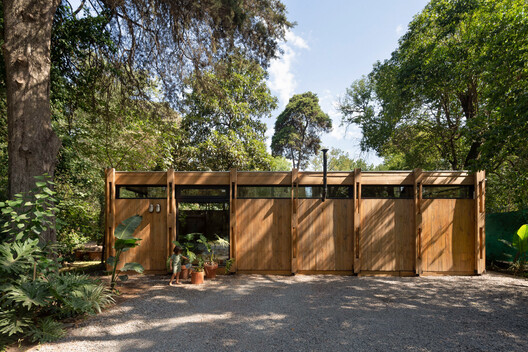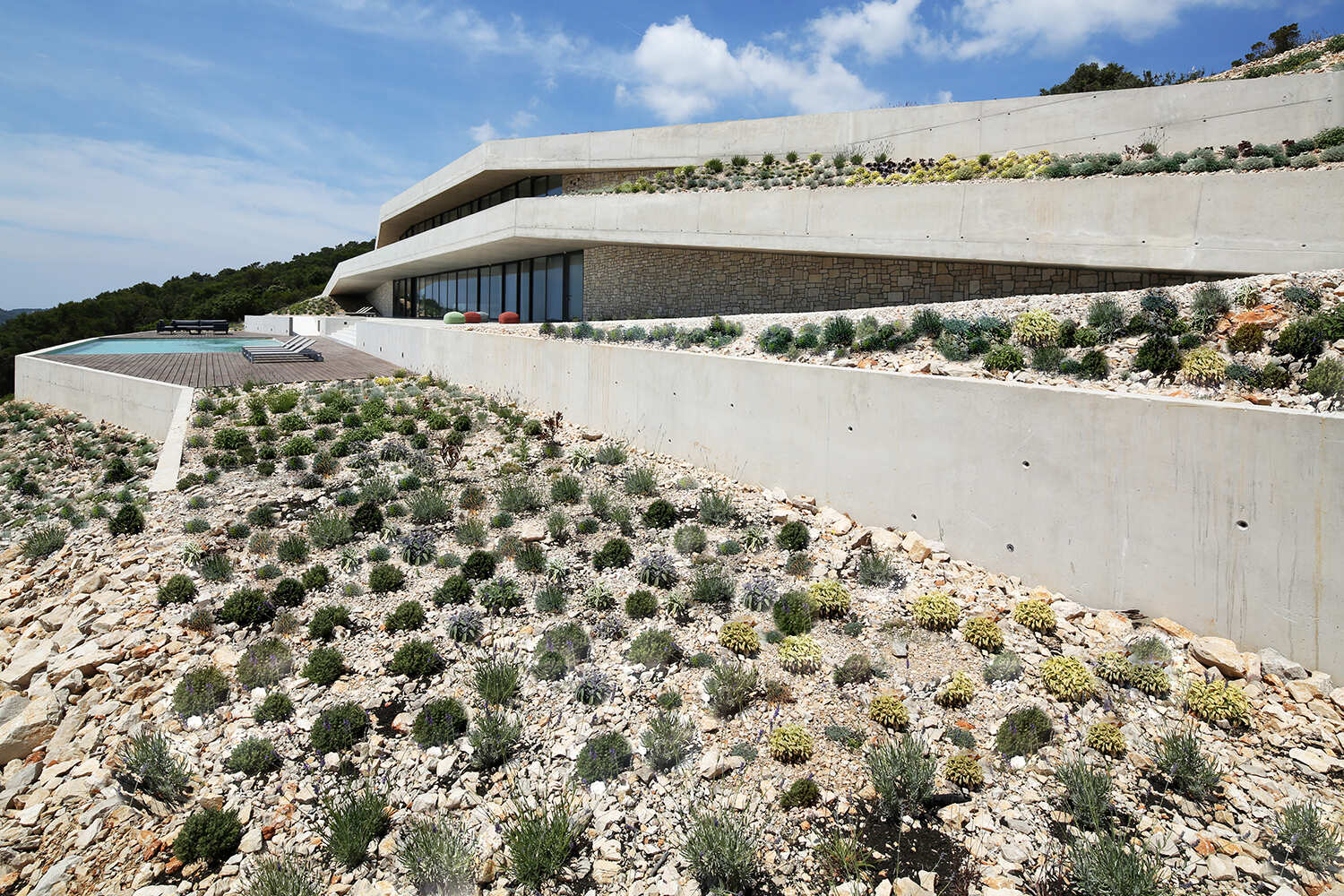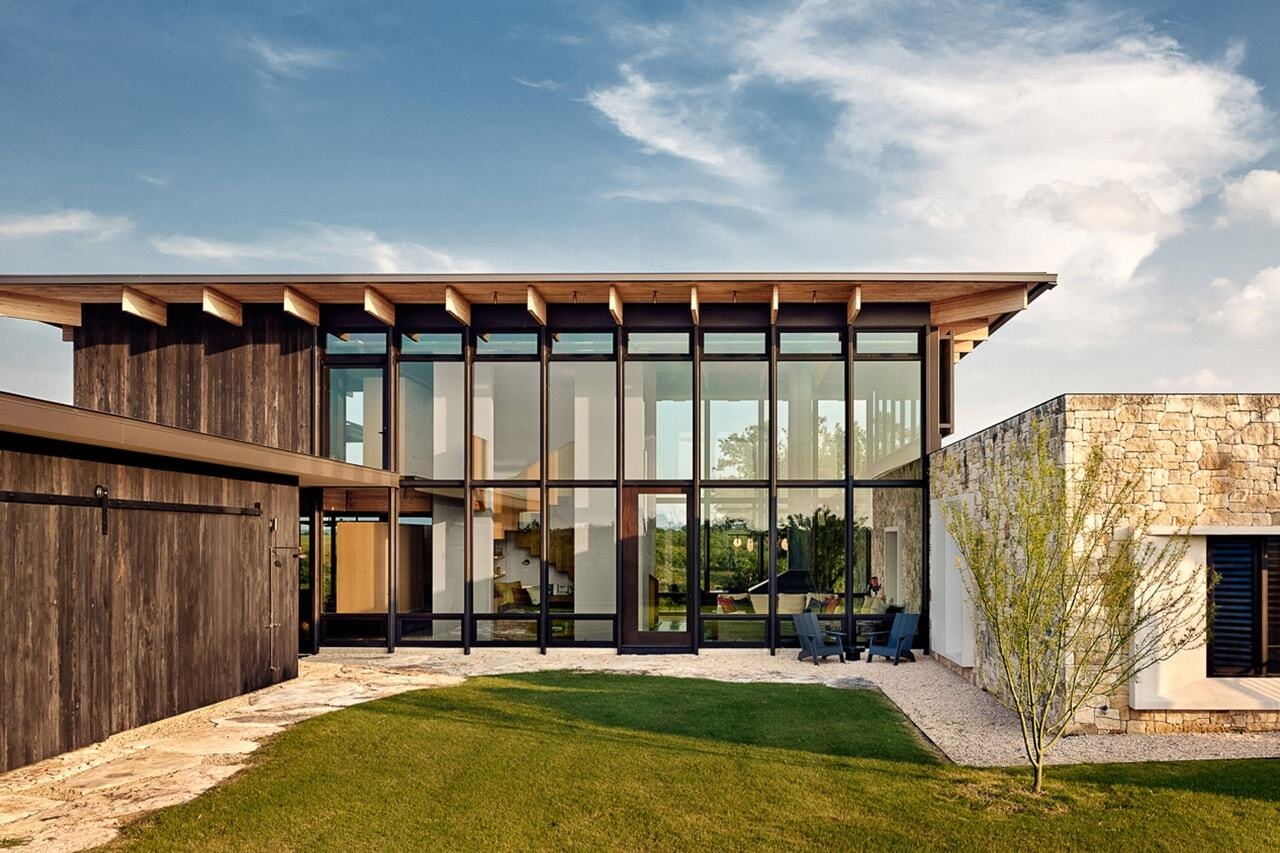Neri&Hu converts Tbilisi's abandoned Soviet-era post office into Telegraph Hotel


Architecture firm Neri&Hu has transformed the carcass of Tbilisi's former central post office into a 239-room hotel while preserving its distinctive modernist facade.
The studio's first project in Georgia saw founders Lyndon Neri and Rossana Hu tackle one of the capital's most prominent Soviet-era ruins, set on the main artery of Rustaveli Avenue.

Originally designed by Georgian architects Lado Meskhishvili and Teimuraz Mikashavidze in 1964, the building served as locals' primary connection to the outside world, allowing them to send telegrams and make calls before this technology became commonplace in most households.
"The Telegraph building holds a special place in Tbilisi's social memory – not just as a physical landmark, but as a space of communication, connection and exchange," Neri&Hu explained.

"Our goal was to respect its identity while reimagining it for contemporary use, creating a new chapter that remains connected to its original spirit of openness and exchange," the duo added.
The renovation saw Neri&Hu retain the building's Soviet modernist facade, with its monumental cornice made of local Bolnisi tuff – the same stone used to clad the Georgian Parliament further along Rustaveli Avenue.

But at street level, floor-to-ceiling glazing was added to allow passersby a peek into the hotel's public spaces, among them five different restaurants and a small library, arranged around a central courtyard complete with climbing greenery and an al fresco bar.
Neri&Hu used glass instead of solid walls to divide these different spaces, maintaining sight lines deep into the building from the street in the hopes of establishing the Telegraph hotel as an extension of Tbilisi's public space.

"A key gesture was the use of a transparent facade, which helps dissolve the boundary between inside and outside," the duo explained. "This visual permeability invites passersby in and reinforces the sense of continuity between public and private space."
"The internal corridors function like small streets, connecting back to the city and encouraging circulation through the site," they added.
"At the heart of the project, the large central courtyard becomes a new, vibrant piazza for the city – a gathering space characterised by an abundance of greenery and planted elements."

In line with this idea, the material palette in the courtyard and the surrounding thoroughfares maintains a touch of the outdoors, with travertine tiles used to cover all of the floors and the hotel's reception desk, alongside informal bench seating reminiscent of street furniture.
Board-formed concrete walls echo the same gridded pattern in homage to the rigid geometry of the Telegraph's facade.
Blackened metal and dark timber round out the interior's pared-back material palette, complementing the worn-down concrete beams and columns that provide glimpses of the building's history.
Neri&Hu used this limited selection of materials to create distinct personalities for each public space, with the library dominated by walnut-veneer panelling, while coffered ceilings and antique mirrors create a French bistro vibe in the Grand Café – a fine dining restaurant serving modern Georgian fare.
Green is the only colour used throughout the entire hotel, found in the leather seating booths of diner-style restaurant The Grill and the metal-mesh screens and lamp shades creating a street-market feel at Laan Thai, which is helmed by Bangkok-born Parisian chef Rose Chalalai Singh.
Veiny green marble was also used to form a pill-shaped bar and a dramatic brass-framed fireplace in the Bell&Grey Bar, which leads onto the Telegraph Hotel's reception.

From here, guests can ascend to their lodgings via a dramatic central staircase, for which Neri&Hu created a custom 35-metre-long pendant light.
The lack of solid walls continues in the 239 guest rooms, housed on the building's upper stories and organised around the courtyard and a second light-filled atrium, looking down at the planted roof of the hotel's ballroom.
Fluted glass and black metal were used to create transparent partitions, separating the bedroom from the bathroom and the living areas.

Like a Swiss army knife, this same metal skeleton also integrates other functions throughout the different rooms, variously acting as a framework for storage and lighting, or holding up mirrors, soap trays and doors in the washroom.
The hotel's rooftop suites also have their own little terrace, providing views over Tbilisi from the sixth floor.
Set to follow in September is the Rolling Stone Rooftop Bar and a crimson-drenched jazz club envisioned by Georgian interior designer Ketuna Kruashvili, positioned near the wood-panelled gym in the hotel's basement.

The Telegraph Hotel forms part of a larger redevelopment of the area surrounding Tbilisi's former Republic Square by the Silk Road Group.
Phase one saw the local investment firm turn the former Hotel Iveria – Georgia's first high-rise tower, which later became a temporary shelter for Abkhazian refugees – into the Radisson Blue Hotel in 2009.
"This space [Republic Square] used to symbolise Georgia's collapse," said Silk Road Group founder George Ramishvili. "We want to change that. Our redevelopment plan will transform it into a pedestrian-friendly area where people want to walk, not avoid."

Despite ongoing tensions with Russia, which currently occupies 20 per cent of Georgia's territory, the country's tourism industry is booming, with direct flights from London to Tbilisi reintroduced this April after a 12-year hiatus.
Among a slew of recent hotel openings is Tbilisi's cinematic Blueberry Nights hotel and Silk Road Group's AHEAD-shortlisted Tsinandali Estate, taking over the winery and estate of Georgian aristocrat Alexander Chavchavadze, which later served as the summer residence of Russia's last tsar.
The post Neri&Hu converts Tbilisi's abandoned Soviet-era post office into Telegraph Hotel appeared first on Dezeen.


















































